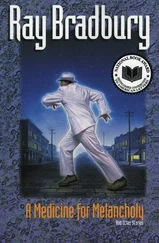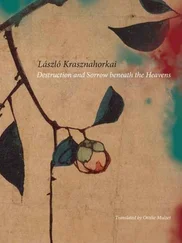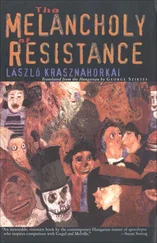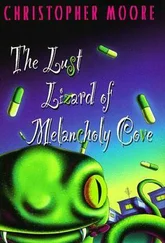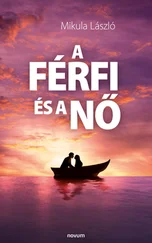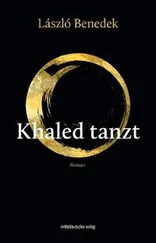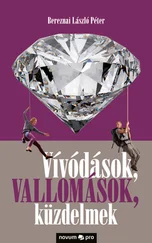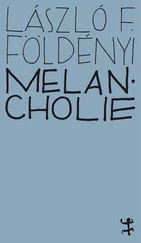Recklessness projects the shadow of irrevocability onto everything. Those who are reckless are well aware that their actions are irrevocable; indeed, since any revocation would pull them back into a world of deliberation and premeditation, that is not even posed as an option. With a nonchalant wave of the hand, Kleist burned his manuscripts, among them two plays and a two-volume novel; after burning one of his works, Byron wrote that it caused him as much pleasure to burn it as to print it. More than one work of the Romantics was produced as though no other person existed on earth apart from the creator; these works were not produced for others, but were the overflows of souls closed in on themselves, which is why it is hard to consider them works at all. Of course, posterity, its tactless curiosity knowing no bounds, regrets the incinerated works, though not the lives that were put into them, since it thinks in terms of art and aesthetics rather than matters of fate and existence. What lies behind recklessness is never an aesthetic point of view; the perpetrators of reckless deeds do not behave as they do to set an example, with some sort of purpose (education, warning, craving for the limelight, rivalry), but for its own sake: the point of recklessness is to experiment with our own latent possibilities, to make sure of their existence . Death hovers over it as a matter of course — but just as the shadow of mortality and of unrepeatability is cast on every single human gesture, word, and deed (things can be repeated, of course, but that is done by another person, another experience, another potentiality), so the transition between the passing of moments and death is also unbroken. “Life is the start of death,” Novalis writes. “The aim of life is dying. Death is at one and the same time closure and beginning. Simultaneous separation and tighter connection” (Novalis, Ausgewählte Werke , 3:7). Well known is Goethe’s dictum that classic is what is healthy, and Romantic is what is sick: “I call the classic healthy, the romantic sickly. In this sense, the Nibelungenlied is as classic as the Iliad , for both are vigorous and healthy. Most modern productions are romantic, not because they are new, but because they are weak, morbid, and sickly; and the antique is classic, not because it is old, but because it is strong, fresh, joyous, and healthy. If we distinguish ‘classic’ and ‘romantic’ by these qualities, it will be easy to see our way clearly” (Johann Peter Eckermann and Johann Wolfgang von Goethe, Conversations of Goethe with Eckermann and Soret , 2 April 1829). Friends of Romanticism usually reject Goethe’s view, though Goethe himself was very reasonable in his dealings with Romanticism. He did not cloak what he had to say in philosophical categories; he did not throw into play against them the absolute spirit, totality, truth, etc., but, very sensitively, relied on biological notions in his arguments. He was right, too: after all, biological reasoning does not judge; it merely states things. Romanticism was sick, Classicism healthy, he asserted but, with customary caution, did not add that anything sick is bad, to be rejected, negative; indeed, on one occasion he pronounced that when possessed of intelligence, both a Classicist and a Romantic could create great works. Romantics would more than likely subscribe to that dictum, and although Goethe abhorred a great many things in which he suspected sickness, he must also have surmised that it was unhealthy to have such a horror of disease . The concepts of sickness and health are subject to the all-embracing fact and reality of life; their significance is therefore secondary. The borderline between sickness and health is far from being as sharply defined as mundane life would like — especially not when one gets to the borderline of an era like Romanticism, which began to doubt not just all comprehensive human communities or solutions, but also the human body itself. Johann David Passavant, a painter-cum-historian of Romantic art, wrote as follows in the early eighteenth century: “The start of my days, just like many valuable hours of my life, is filled with daydreaming. This affliction is based on intellectual weakness. It indicates diminished vitality and increased irritability. I hope that I shall be cured of the disease if my mind is engaged by a well-defined occupation and will or necessity forces me to choose some sort of career” (quoted in Krimmel, “Naturgestalt und Kunstfigur,” xvi). Passavant did pick a vocation, and it may have been thanks to that that he lived to the ripe age of seventy-four. Many others, however, chose no occupation — not for lack of will or necessity, but because their minds were absorbed by something else more imperatively than anything that one might choose resolutely. Novalis was struck down by tuberculosis, but he had expected to die many years before; Büchner likewise readied himself for death at a young age, and it may have been his will that brought on his illness; Bürger, Hölderlin, Lenau, and Schumann owed their madness to their frazzled nerves and a series of deeply felt disappointments; Grabbe and Burns became victims of alcoholism; they drank — to use a line from Chekhov — so that the “world may look like the world.” Just days before his death, Schubert spoke to a friend of the “absolutely new harmonies” running through his head, and he did not flinch from dying. Wackenroder stated, “In the case of less strong souls, everything that a person uses to create runs through the blood and transforms the insides without the person being aware of it” (Wilhelm Heinrich Wackenroder, Dichtungen, Schriften, Briefe , 230). Accordingly, soon after Wackenroder’s fictitious musician, Joseph Berglinger, created the greatest work in his life, he contracted a nervous debility and quickly died, to be followed to the grave shortly afterward by twenty-five-year-old Wackenroder himself. Lenau mentioned the “streak of unluckiness” in himself several times, and the painter Philipp Otto Runge blamed his internal dissolution for his artist’s block and precipitous decline in health. On hearing of Runge’s early death, Goethe is said to have noted, “He did not last long, poor devil, it’s already the end for him, and it could not have happened any other way; anyone who is so flimsy either has to die or go mad — there is no mercy in such cases” (quoted in Richard Friedenthal, Goethe: His Life and Times , 558). What he had to say about Kleist is also noteworthy: “with horror and shuddering, as if an incurable disease had assailed a body that nature had intended to be so fair” (557). Byron was dispatched by malaria — which was just as fateful as Hölderlin’s insanity, for Byron deliberately courted death, and it eventually took this form to finish him. (He could go no further because “he reached the summit of his creative power”—that is Goethe again [Eckermann and Goethe, Conversations , 18 May 1824].)
The prematurely dying Romantics did not simply die — they, so to speak, threw down the gauntlet to fate and did violence to death. Life slipped out of their hands (“It is truly odd that nowadays everything to which I set my hand miscarries; every time I decide to take a certain step, the ground slips from under my feet,” Kleist wrote in the year of his death [ Werke und Briefe , 4:485]), and they sought refuge from life in death. “Death is life’s main prize,” said Novalis ( Ausgewählte Werke , 3:6), who possibly experienced the relativity of life and death more deeply than anyone. Since the world is fraught with disappointments, failures, and limitations, it does not permit even death to unfold its full nature. Heidegger came to the following view on the notion of death held by everyday consciousness, surmising as it does a rigid contrast between life and death and thinking on a mutually exclusive basis in all things:
Читать дальше

